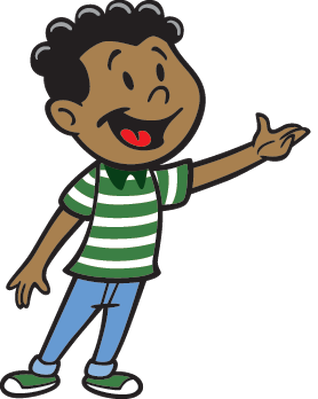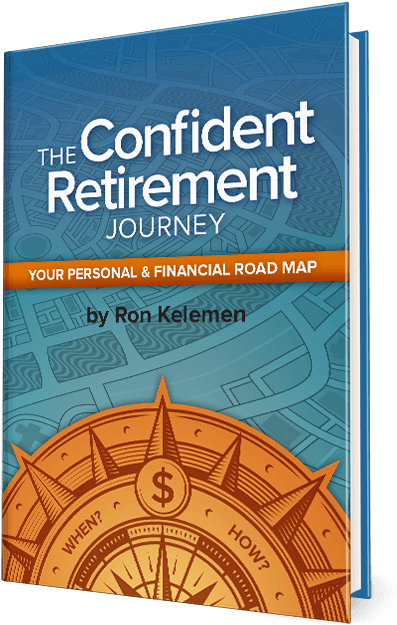Computer History Computers are calculators or mathematical machines that can exchange information very well and precisely according to correct formulas and rules. Computers have been around for a long time, giving people a lot of needs. Computers used to be bigger and less usable, but now computers have become great and valuable for most people. It is the fastest and most up-to-date information provider.
How many generations of computers? And how many types?
There are 5 generations of computers:
- 1st generation: Computers that use Vacuum Tube technology that is capable of calculating 500 times per second and can insult the way at a speed of 0.2 millisecond and large.
2nd generation: Computers using Transistor technology capable of calculating from 200,000 to 250,000 per second
- 3rd generation: Computers using Inter grade Circuitry technology instead.
4th generation: Computers that use technology in addition to increase the variety of applications and can save real memory.
5th generation: Computer capabilities developed to calculate speeds of 3 to 5 million times per second and can receive commands from 10 to 15 million times per second.
There are four types of computers:
- Microcomputer Systems: are computers that can be placed near the table or on the table or can be taken, such as: Desktop PCs, Tower PCs, Notebook (laptop computer), Personal Digital Assistants.
Mid-range systems: These are called minicomputer, which are used in some systems for universities, factories, laboratories, and they can be servers used to set up a company's internal network or create a website.
Mainframe Systems: Used as a terminal with an image display and keyboard that can enter and output data but can not process data on its own. And this machine can process billions of commands per second.
Super Computer: A high-performance machine with thousands of processors capable of computing 3 to 4 trillion times per second, the fastest. Used for mining and research, nuclear weapons and large-scale operations
Computers can do whatever anyone wants them to do Computers can solve maths because programmers tell them how to solve math problems because computers are so fast that they can solve millions of math problems per second.
The word computer originated in the mid-17th century Latin word meaning "someone who computer." The American Dictionary of Heritage (1980) named the first computer "a person who computes". And human activity until the middle of the 20th century, when it was developed as an electronic device for applications that could store, receive and process data, such as Webmaster Master Dictionary (1980). Nowadays, the computer world refers to computer peripherals.

Computers can control many factories that used to be run by humans, but now they only use computers to manage them much easier and better. The first computerized electronic systems were developed in the middle of the 20th century (1940-1945). The raw material of a computer when first created is so large that in a large room it consumes a lot of energy. The word computer is an old word that has changed its meaning many times in the last century.


Computers were invented by Charles Babbage (26 December 1791 - 18 October 1871 was born in Walworth.
The word computer originated in the mid-17th century Latin word meaning "someone who computer." The American Dictionary of Heritage (1980) named the first computer "a person who computes". And human activity until the middle of the 20th century, when it was developed as an electronic device for applications that could store, receive and process data, such as Webmaster Master Dictionary (1980). Nowadays, the computer world refers to computer peripherals.

After World War II, during 1946, computers were called Electronic Numerical Integrator and Calculator, which went through the following five stages:
Generation 1 (1945-1955) Vacuum tubes It was created by Lee De Forest. It has about 18,000 bulbs and is about the size of a small room. It is almost 2% more efficient than current computers.
Second generation (1955-1965) technology based on transistors connected to memory (RAM) and can develop its skills by computer applications (Computer Application) is written at a high level.
3rd Generation (1965-1975) Technology based on Integrated Circuit, small size, can be placed on a desktop, laptop or portable laptop.
4th generation (1975-1989)Expanded the management and operational efficiency of large and small-scale integrated computers, which can integrate many complex tasks into a single system at the smallest level.
5th generation (1989-present) technology VLSI (Very Large Scale Integration) is an integrated database containing millions hv_rIn (transistor) and Electronic Circuit into a single chip. Computer models that produce first category Computers Computers are very popular nowadays besides desktops, there are many other computers and they have different sizes and capabilities . Super Computer: Used in military management, weapons, forecasting, meteorology, or scientific research, especially in space.


Generation 1 (1945-1955) Vacuum tubes It was created by Lee De Forest. It has about 18,000 bulbs and is about the size of a small room. It is almost 2% more efficient than current computers.
Second generation (1955-1965) technology based on transistors connected to memory (RAM) and can develop its skills by computer applications (Computer Application) is written at a high level.
3rd Generation (1965-1975) Technology based on Integrated Circuit, small size, can be placed on a desktop, laptop or portable laptop.
4th generation (1975-1989)Expanded the management and operational efficiency of large and small-scale integrated computers, which can integrate many complex tasks into a single system at the smallest level.
5th generation (1989-present) technology VLSI (Very Large Scale Integration) is an integrated database containing millions hv_rIn (transistor) and Electronic Circuit into a single chip. Computer models that produce first category Computers Computers are very popular nowadays besides desktops, there are many other computers and they have different sizes and capabilities . Super Computer: Used in military management, weapons, forecasting, meteorology, or scientific research, especially in space.


2. Mainframe Computer: Weaker than Super Computer, but used in large science projects, satellites, the Internet and the media.


3. Mini Computer: considered as a middle class used as a server to manage other computers as Clients and distributors of important data. In short, they are in big companies, schools, hospitals and so on.


4. Macro or PC Computer: Also known as Macro Computer is a type of computer that is commonly used by ordinary users. It is small, inexpensive, and versatile today, and is divided into five different categories:
Desktop Computer is one of the largest computers in the world today. It has high performance and affordable price compared to - Notebook is a small computer that can be easily taken to other places, now it is becoming more and more popular. - Tablet is the latest computer and has the ability to display data and use voice commands, and in particular, it can also work internally Notebook PC easily. - Pocket PC



Computers are about the size of our fingertips and are very popular these days because they can be easily carried anywhere and display data via touch pen. Also. This type of computer is suitable for business people or business people because it has many benefits, such as for us to record appointments, write names that need to communicate or can receive and send emails and plans and play. Play games and watch videos.
-Hybrid and Smartphone Mobility and modern wireless communication concept: a group of metal black glossy touchscreen smartphones with different applications isolated on white background with reflection effect.


Desktop Computer is one of the largest computers in the world today. It has high performance and affordable price compared to - Notebook is a small computer that can be easily taken to other places, now it is becoming more and more popular. - Tablet is the latest computer and has the ability to display data and use voice commands, and in particular, it can also work internally Notebook PC easily. - Pocket PC



Computers are about the size of our fingertips and are very popular these days because they can be easily carried anywhere and display data via touch pen. Also. This type of computer is suitable for business people or business people because it has many benefits, such as for us to record appointments, write names that need to communicate or can receive and send emails and plans and play. Play games and watch videos.
-Hybrid and Smartphone Mobility and modern wireless communication concept: a group of metal black glossy touchscreen smartphones with different applications isolated on white background with reflection effect.


Lesson Summary
How many generations of computers? And how many types?
There are 5 generations of computers:
- 1st generation: Computers that use Vacuum Tube technology that is capable of calculating 500 times per second and can insult the way at a speed of 0.2 millisecond and large.
2nd generation: Computers using Transistor technology capable of calculating from 200,000 to 250,000 per second
- 3rd generation: Computers using Inter grade Circuitry technology instead.
4th generation: Computers that use technology in addition to increase the variety of applications and can save real memory.
5th generation: Computer capabilities developed to calculate speeds of 3 to 5 million times per second and can receive commands from 10 to 15 million times per second.
There are four types of computers:
- Microcomputer Systems: are computers that can be placed near the table or on the table or can be taken, such as: Desktop PCs, Tower PCs, Notebook (laptop computer), Personal Digital Assistants.
Mid-range systems: These are called minicomputer, which are used in some systems for universities, factories, laboratories, and they can be servers used to set up a company's internal network or create a website.
Mainframe Systems: Used as a terminal with an image display and keyboard that can enter and output data but can not process data on its own. And this machine can process billions of commands per second.
Super Computer: A high-performance machine with thousands of processors capable of computing 3 to 4 trillion times per second, the fastest. Used for mining and research, nuclear weapons and large-scale operations








Post a Comment